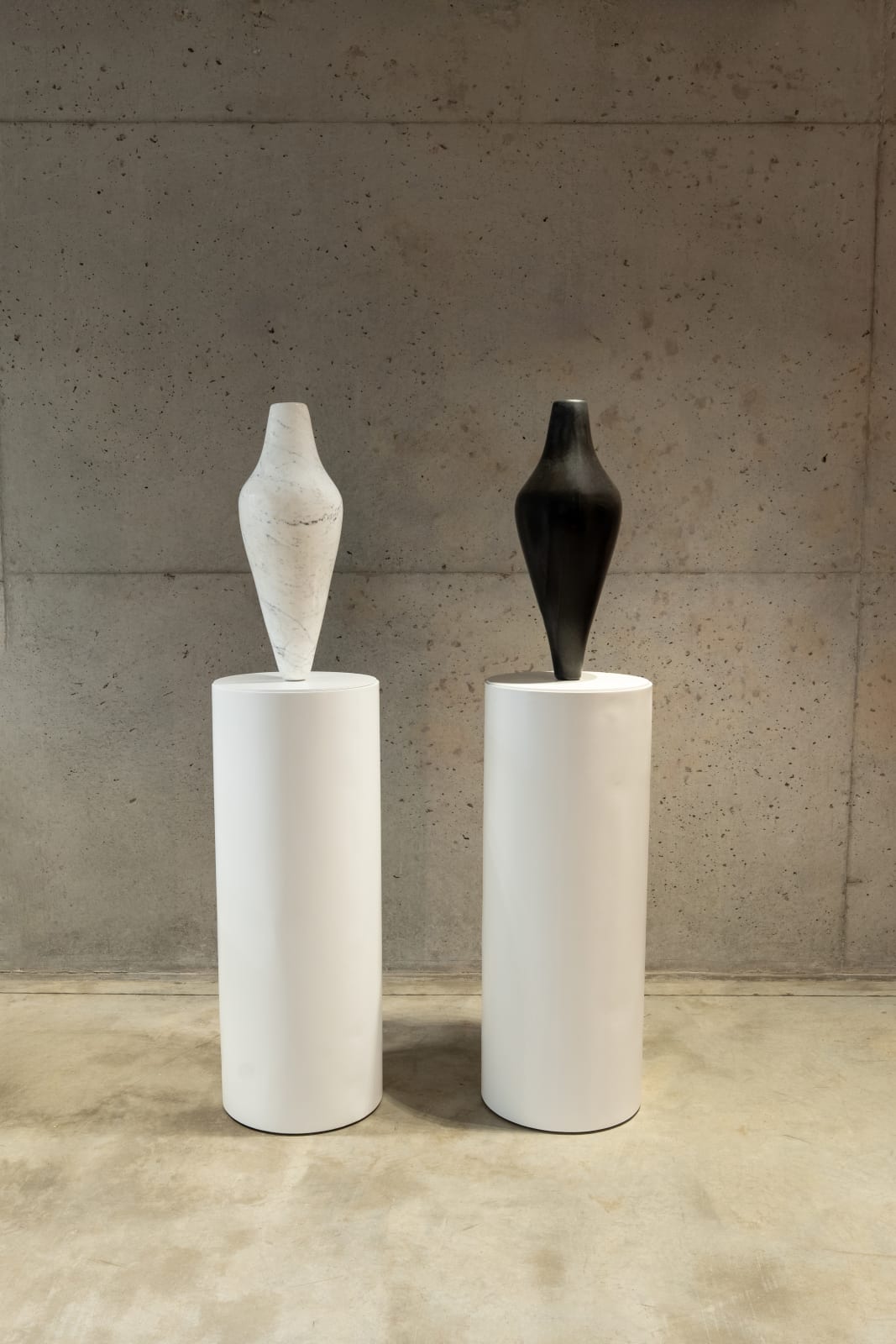
M’barek Bouhchichi Moroccan , b. 1975
Saadia, 2025
Black Aziza marble and white Carrara marble
62h x 23 diam cm each
MB-000126
The legend of Boussaadia, referenced in Boussaadia (2025) and Saadia (2025), further touches on the experiences of displacement and othering that come with migration journeys. According to legend, Boussaadia [Father...
The legend of Boussaadia, referenced in Boussaadia (2025) and Saadia (2025), further touches on the experiences of displacement and othering that come with migration journeys. According to legend, Boussaadia [Father of Saadia] is a hunter from the Sahel whose daughter was kidnapped by slave raiders on their way north. He sets out on a journey across the desert to retrieve her. Weeks later, having arrived in Tunis exhausted and destitute, he resorts to begging in the streets while singing his sorrow. Boussaadia has become a tutelary figure in the Tunisian Stambeli tradition. Whereas Boussaadia is a known figure in Tunisian culture, Saadia, his abducted daughter, is absent from representation. She is synonymous with absence. With Saadia (2025), Bouhchichi attempts to give her a body. The work features two sculptures reproducing the same Neolithic object: a small, abstract female figurine from around 4,000 BCE, found in Kadruka, Sudan in the 1980s during a landmark dig in African archaeology. One of the sculptures is made from black Aziza marble, sourced from Tunisia, and the other from white Italian Carrara marble. This doubling trope recurs throughout the exhibition. Bouhchichi plays with variations of the same object via color, material, or texture. Such doubling indicates a contrast between two states of a body, or an idea of movement from a point of departure to a point of arrival. In the case of Saadia, the Carrara marble hints at Greco-Roman sculpture and the way it stands in for whiteness, deemed exclusively worthy of representation. The locally sourced black marble contests this narrative and proposes a different representational ethic. By hosting a transposition of the Kadruka figure, it inscribes Sudanese poiesis into Tunisian visuality.